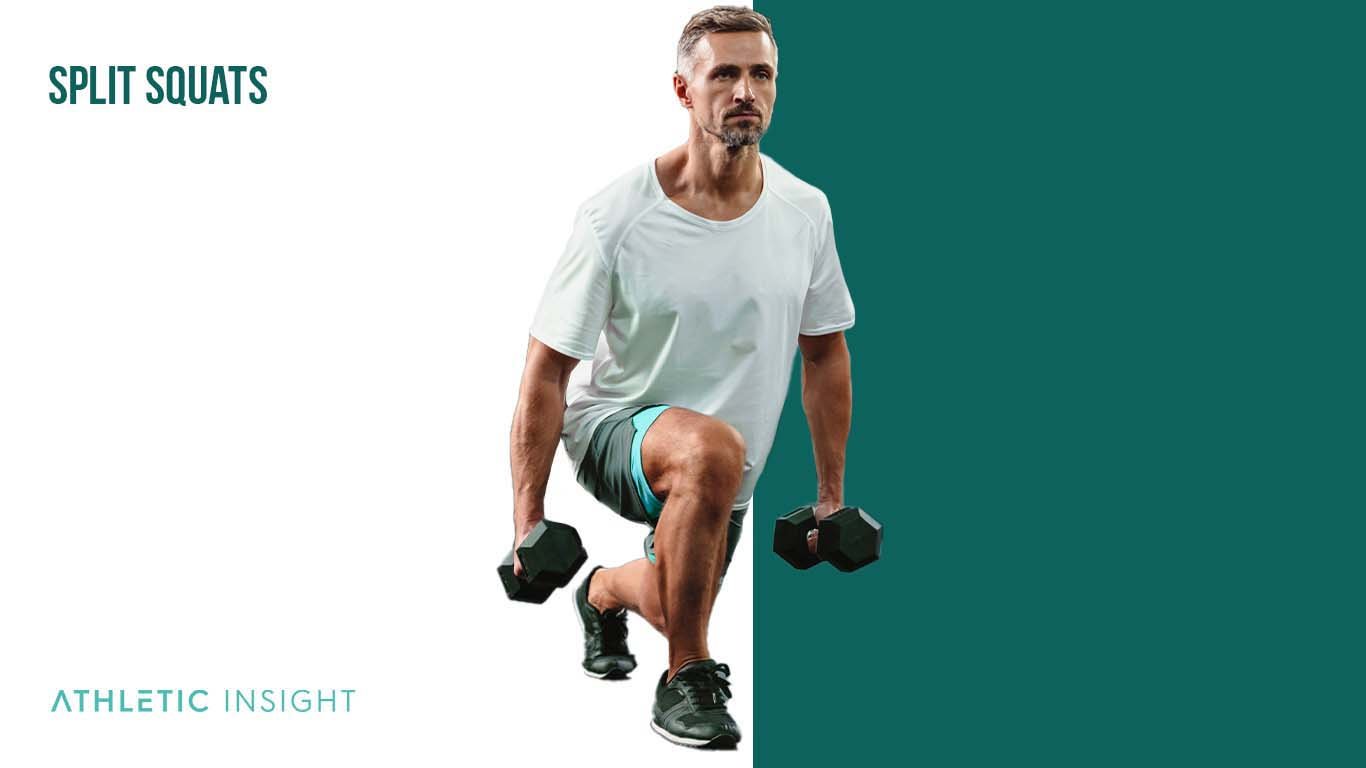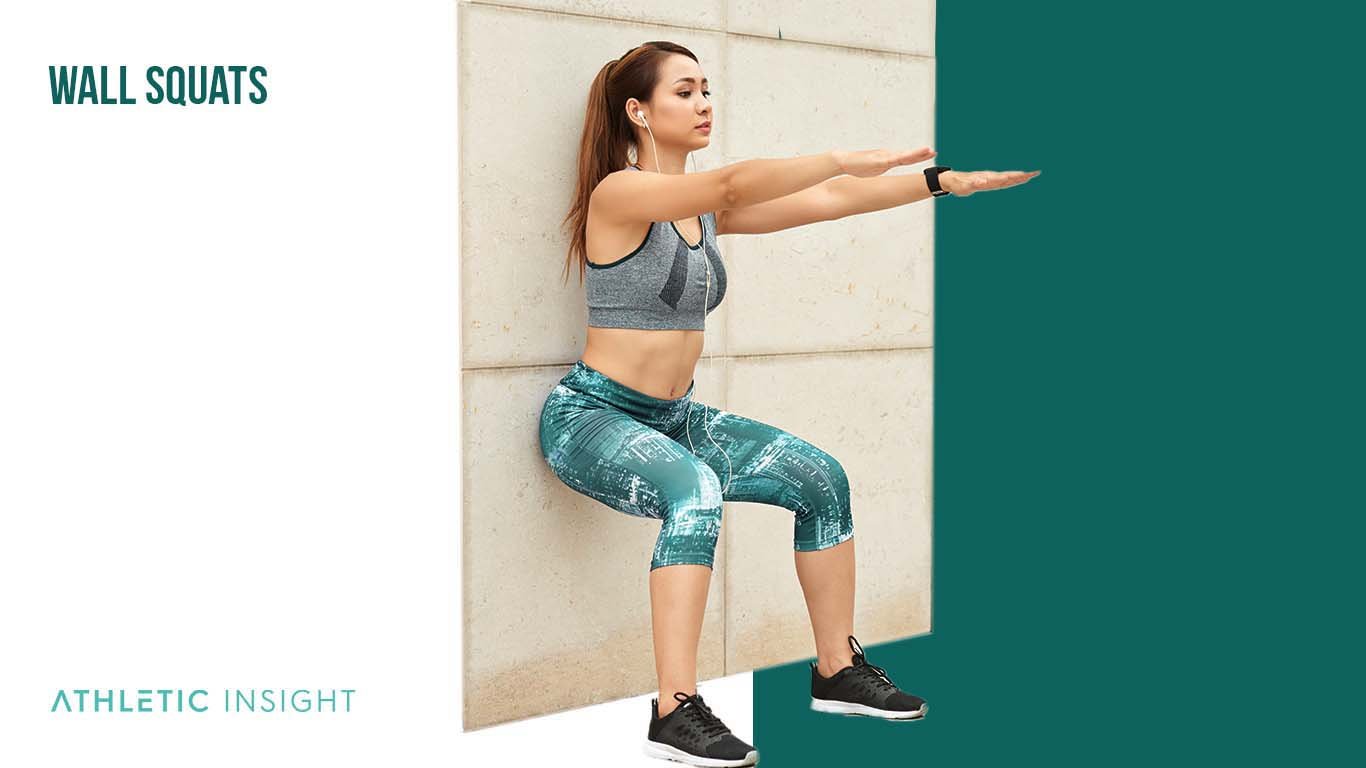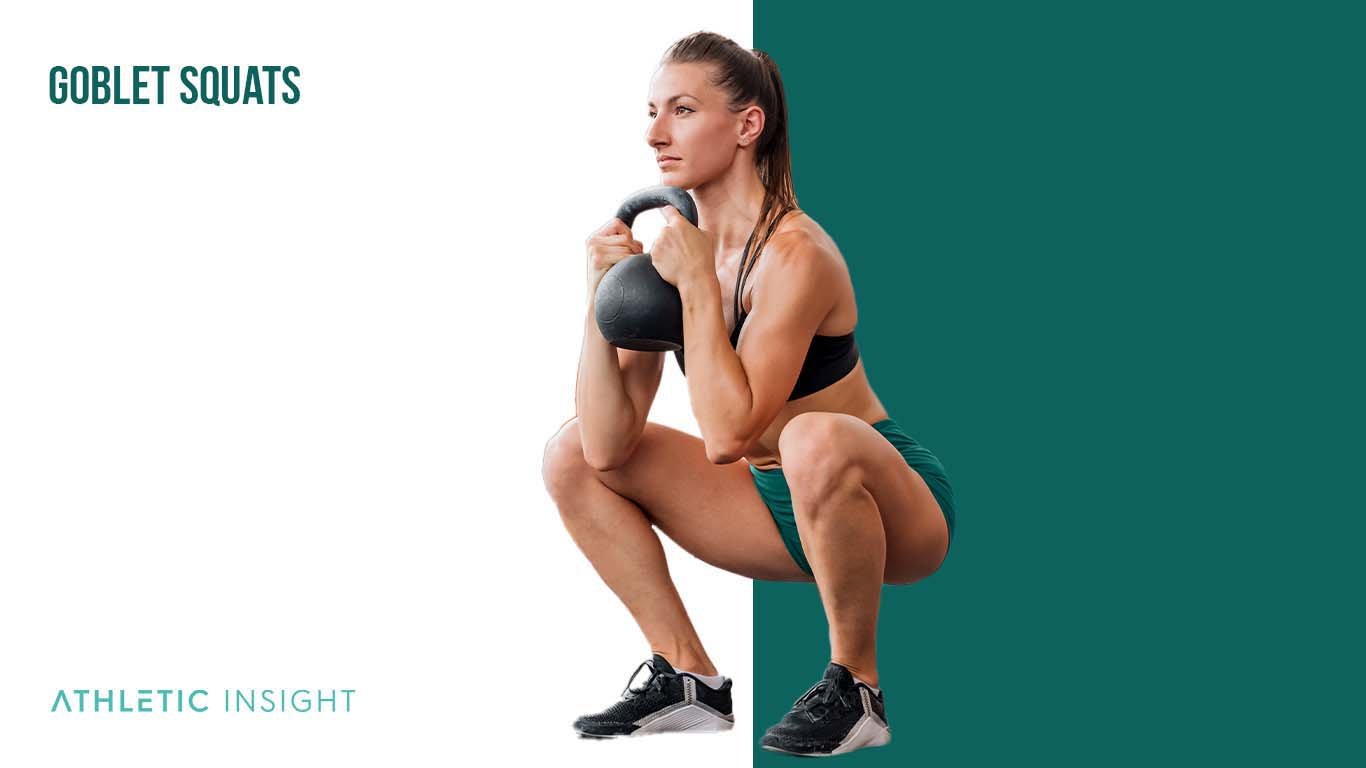A lunge alternative is an exercise that strengthens your legs, similar to the lunge, but allows for diversity in the exercise. There are many reasons you may want an alternative to this classic leg-day exercise known as the lunge. Whether it is because of an injury, or perhaps you are trying to isolate a muscle that the traditional lunge doesn’t exercise, these lunge alternatives make for a suitable replacement.
Lunges can be disastrous for people with weak joints or bone disorders. Leaning forward while moving down during a lunge will impact and strain your knees and your hips. Beginners may also find the lunge to be a difficult exercise to master. It requires upper thigh strength and balance.
While the lunge is a popular compound leg movement, the various lunge alternatives are often practiced as well. Each lunge differs in its level of difficulty, so be sure to practice perfect form before going up in weight. Check out these nine alternatives to lunges that will still result in powerful quads and make leg day a success.
1. Glute Bridges
A glute bridge is a lunge alternative that targets both your legs, core, and glutes. The glute bridge is useful for all weightlifters, regardless of sport or profession. Since the glute bridge enhances strength, definition, and endurance in the aforementioned areas, this alternative to the lunge is a prime exercise for athletes, Strongmen, Olympians, and everyday weightlifters.
A glute bridge looks quite different than a lunge, but they work the same muscles. To do a glute bridge, you lay flat on your back with your shoes beneath your knees. Move your pelvis up until your thighs are in line with your stomach and chest. This movement activates the muscles in the front of your thighs, the same muscles lunges work out.
Glute bridges are perfect for beginners trying to strengthen their thighs but aren’t ready for leg workouts that require balance. In addition to your glutes, glute bridges also work on your abdominal muscles. Some people use these bridges as an alternative to sit-ups or an alternative to a backward lunge.
2. Step-Ups
Step-ups are another effective lunge alternative that helps develop your leg muscles. Using a step or weight bench, lift one leg and take a step up, holding for a moment before returning to the ground. Step-ups workout both your quads and calf muscles for an excellent overall leg workout, especially if you are looking to replace the lunge.
The key is to not use your resting leg at all. Don’t push off the ground if you want the best results. This workout is ideal for beginner or intermediate exercisers and is a great lunge alternative for adaptive athletes. It can also be more effective in training your quads if you hold one or two dumbbells while doing it.
Step-ups are one of the most popular lunge alternatives because they rely on the legs in the same way while requiring less balance. If you struggle with the lunge, give the step-up a try.
3. Chair Squats
A chair squat is a lunge alternative that exercises and engages your quads, hamstrings, and glutes, making them an excellent alternative to lunges. Chair squats are ideal for beginners because they are easy yet effective at toning your legs and buttocks.
To do a chair squat, stand in front of a sturdy chair. Hold your arms straight out in front of you and parallel with the floor. Keeping your arms and back straight, lower yourself until your buttocks graze the chair, and then stand back up.
The slower you do each squat, the more you will get out of the workout. You can even make this a lunge alternative with bands to add some extra resistance when you stand up.
4. Single-Leg Balance
The single-leg balance is a lunge alternative that engages your legs, as well as your core. It is an effective replacement, or even a supplement, to the lunge. Since you isolate one leg at a time, the core is engaged throughout the movement, making it a compound exercise.
Believe it or not, you spend 40% of your time balancing with a single foot. Not only is a single leg balance exercise great for your quads in place of lunges but also improves your overall balance.
The proper form for a single leg balance is to stand behind a chair or other sturdy support with feet shoulder-width apart. Hold onto your support, and raise your thigh upward until it is parallel with the floor. The single-leg balance is one of the easier lunge alternatives and is perfect for beginners. It’s another great resistance band exercise, too!
5. Split Squats
Split squats are a lunge alternative that works out your glutes, quads, hamstrings, calves, and core. While these are advanced leg exercises typically performed by athletes, they benefit all who perform them. As long as you have proper form, the risk to reward is well worth the burn.

The split squat is one of the more difficult exercises, so don’t try this one until you’re confident with your quad muscles. But, if you’re looking for something like a P90x three-way lunge alternative, this could be a good start.
To perform this exercise, stand with your back to a weight bench or step. Place your foot on the bench so the sole of your foot is facing upward. Bend the leg that is on the floor until your thigh is parallel with the floor.
You can hold dumbbells to intensify the workout, but try it without first getting comfortable with the form. Split squats engage your thighs, calves, and buttocks. Split squats are popular with bodybuilders as they engage far more muscles than a simple lunge does.
6. Single-Leg Leg Press
A single-leg press, or a one-leg press, is a lunge alternative that is great for an individual aiming to improve their leg strength quickly. Using a leg press, you lift as much weight as you can with one leg while keeping the other one on the floor. The force of gravity engages all of your leg muscles, giving you an effective workout for your lower body.
Weightlifters benefit from how much this focuses on their quads alone, but it isn’t a super popular lunge alternative. The downside of this workout is that it neglects other muscles and requires a press machine, which some won’t have access to. It’s also not a great lunge alternative for people with bad knees or hips.
7. Wall Squats
A wall squat is a lunge alternative that exercises the hamstrings, glutes, quads, and core. Typically conducted by athletes, this alternative to the lunge is the perfect exercise for all people looking to build muscle strength and endurance. It also requires no equipment, making it a great at-home lunge alternative.

If you’ve ever played a sport with a serious coach, you’ve probably experienced the pain of a wall squat. While difficult and effective, they are easy to learn and understand and come down to willpower to make the exercise effective. Lean your back against a wall and slide down slowly into a sitting position. Keep your posture as erect as possible.
You can hold this position as long as you can, or do reps. After a minute, you should feel the top of your thighs burning, which means it’s working.
8. Goblet Squats
The goblet squat is a lunge alternative that works out your glutes, quads, hamstrings, calves, and core. While it is typically conducted by athletes, the goblet squat can be done by all weightlifters, especially those looking to change up their routine.

You may look funny doing goblet squats, but they are an incredible workout for your thighs and lower body. The perfect goblet squat form begins with standing shoulder-width apart. Many people use a single dumbbell for a bodyweight lunge alternative, but you don’t have to.
Hold the dumbbell vertically in both hands or ball both hands into a fist. Keep your shins as vertical as possible, and squat down as low as you can go. For an extra challenge, you can even make this a lunge alternative for the balls of your feet by rising up onto your toes while you squat. The workout is moderate in difficulty and focuses on your glutes and quads.
9. Single-Leg Romanian Deadlifts
The single-leg Romanian deadlift is a lunge alternative that exercises the legs, core, and lower back. While the Romanian deadlift is conducted by athletes looking to gain strength, such as Strongmen, this lunge alternative is great for all athletes. Single-leg Romanian deadlifts are rather intense, so don’t try this one if you’re not confident in your leg balance.
To perform a single-leg Romanian deadlift, stand normally and raise one leg back and slightly bend the other leg at the knee. Maintain your balance and slowly lead down until your body and raised leg are parallel with the floor.
Pause at the bottom, tighten your glutes, slowly rise back up to your standing position, and touch both feet on the floor. This exercise requires a lot of balance. If you’re not confident in your ability to stay upright, you could risk injuring yourself.
What To Know About Lunge Alternatives
The main thing to understand about lunge alternatives is that they all work out your quads and hamstrings to help strengthen your upper legs. Many alternatives engage your calf muscles or your core muscles, offering more benefits than a standard lunge.
Some lunge alternatives work best to build bulk muscles and make your legs thicker. Others work more muscles in your body, improving your overall coordination, which begins with strength in your legs.
Which Lunge Alternative Is Beginner Friendly?
The most beginner-friendly lunge alternative is the glute bridge. It’s easy to do, and you start in a stable position, so there’s no risk of falling or industry. It also requires no weights, making it ideal for someone just starting to exercise their leg muscles.
Removing the need for balance from an exercise makes it easier, and the glute bridge is the most stable exercise on this list of alternatives.
Which Lunge Replacement Exercise Is Better For Legs?
The lunge replacement that is better for the legs is the goblet squat or the step-ups, as these also engage the calf muscles and your buttocks. While the lunge is one of the best leg exercises, both goblet squats and steo-ups are equally effective.
Which Lunge Alternative Is Better For Quads?
The best lunge alternative for your quads is the wall squat. The wall squat almost exclusively focuses on the top of your thighs, which will become apparent when you do one.
The burning in your thighs is the ultimate sign that the muscles are engaged and getting stronger. Another good option for a quad workout is the split squat, which puts a lot of strain on your quads, strengthening them. These are great lunge alternatives for bad toes or if you’re trying to improve your stamina as well.
Which Lunge Substitute Is Better For Strength?
If you focus on pure strength, the best lunge alternative for you is likely the single-leg leg press. When you use a press machine, you can adjust the weight to be heavier so you can build up your muscles as fast as possible.
The leg press doesn’t require balance, so no additional energy or effort will be wasted.
Which Lunge Alternative is Better for Bad Knees?
Although a tough workout, single-leg Romanian deadlifts are the best workout for people with knee problems. It requires balance, but you only need to bend your knees slightly, so your joints don’t experience as much strain.
People with bad knees or bad toes should avoid the goblet squat and the step-ups, as these can put immense stress on your knee joints and front of your feet, possibly causing an injury or chronic pain.
Which Lunge Alternative Is Better for Bad Hips?
The lunge alternatives that put a lot of pressure on the hips will be the most difficult for those with hip problems. The Romanian deadlift requires a lot of balance but doesn’t require much hip rotation, making it a good option.
Glute bridges are less effective in building muscle but can help you strengthen your hips and make them more flexible. By laying on the floor, you give your hips a break from balancing the weight of your upper and lower body. Instead, your hips only need to support your thighs as you lift. This allows you to flex your hips gently, without bending all the way forward.
When Should an Athlete Use Lunge Alternatives For Exercise?
Adaptive athletes should look to lunge alternatives for leg training days when they’ve suffered an injury in their hips or knees. Lunges put pressure on these joints and can make the injury worse or take longer to heal.
Athletes may also use lunge alternatives to focus on different areas of their legs, like their calves or buttocks.
What Are the Advantages of Substituting the Lunge?
Substitutes for lunges have many advantages because they often engage more muscles than a normal lunge. Lunges can also be harsh on people with joint or balance problems. Many lunge alternatives can also engage your core while exercising your lower body.
These alternatives, such as the wall sit and the Romanian deadlift, are more like full-body exercises than something exclusively focused on your thighs.
Which Lunge Alternative Is Safer?
The safest lunge alternatives are the ones that use a stable surface to support you. Chair squats and single-leg balance both use a chair or bench as support while you exercise one leg at a time. There is little to no other equipment involved, reducing the risk of injury. The presence of support also removes balance from the equation, lowering the risk of injury.
The single-leg is probably the safest, as it is just standing on one leg while holding onto a chair – an easy feat for most.
Can Lunge Alternatives Replace the Lunge?
Lunges are a popular and foundational exercise that most people will not want to replace completely, but it is possible. The best replacement is the split-squat because it uses the same muscles but in a more intense exercise.
The split squat is appealing because it can be very effective in working on both lower and upper muscles in your legs. Lunges work your calves but focus much more on your thighs, while split squats come closer to splitting the difference, so both groups of muscles engage.
Which Lunge Alternative Movement Is Best?
Everyone will have their preference when it comes to the best alternative, but it seems most people love to replace their lunges with step-ups. Step-ups offer a very similar workout to lunges but can be kicked up a notch with the addition of weights or a higher step.
Because the movement is more customizable, it works best for a wider range of people looking to strengthen their legs and thighs.
If you’re not clear on how to use proper form with any of these lunge alternatives, consider looking for videos or pictures online, or check forums like Reddit for squat and lunge alternative images.



